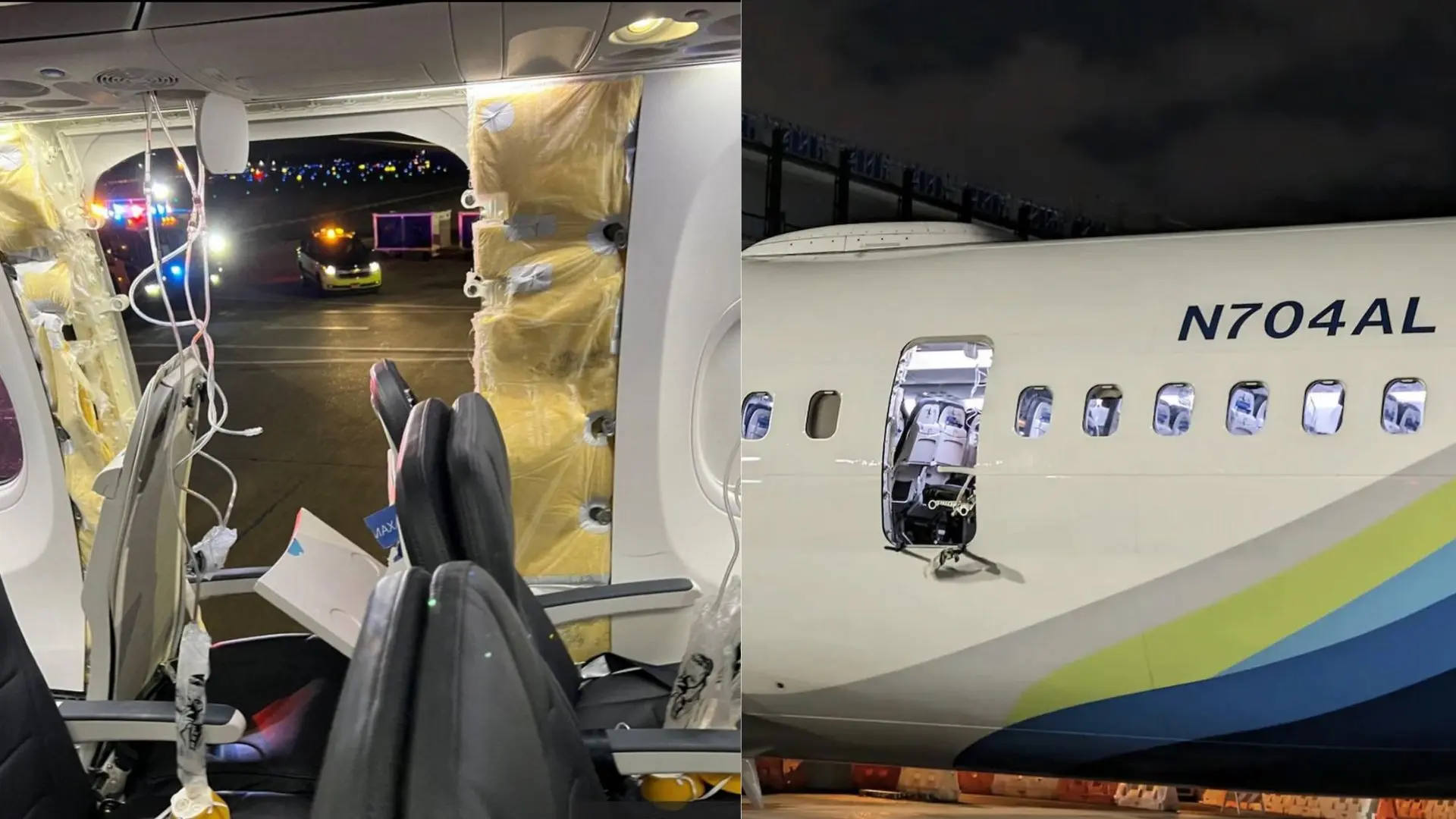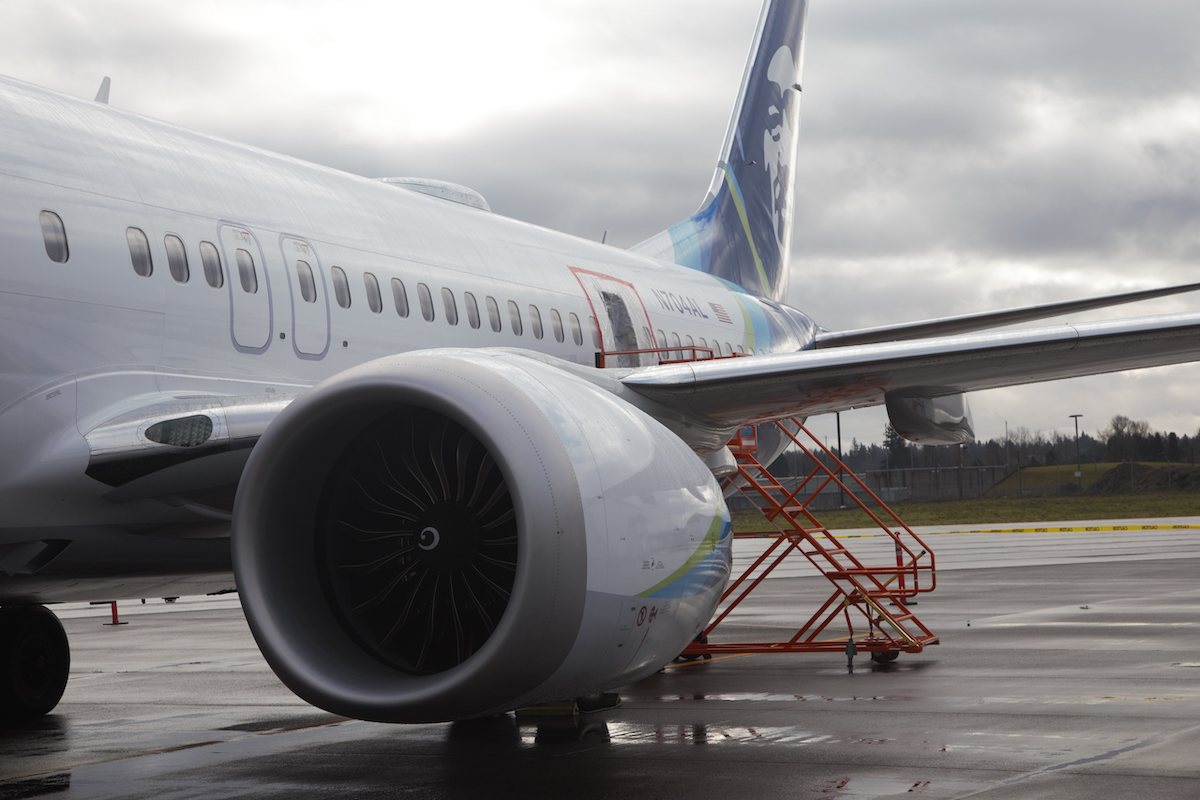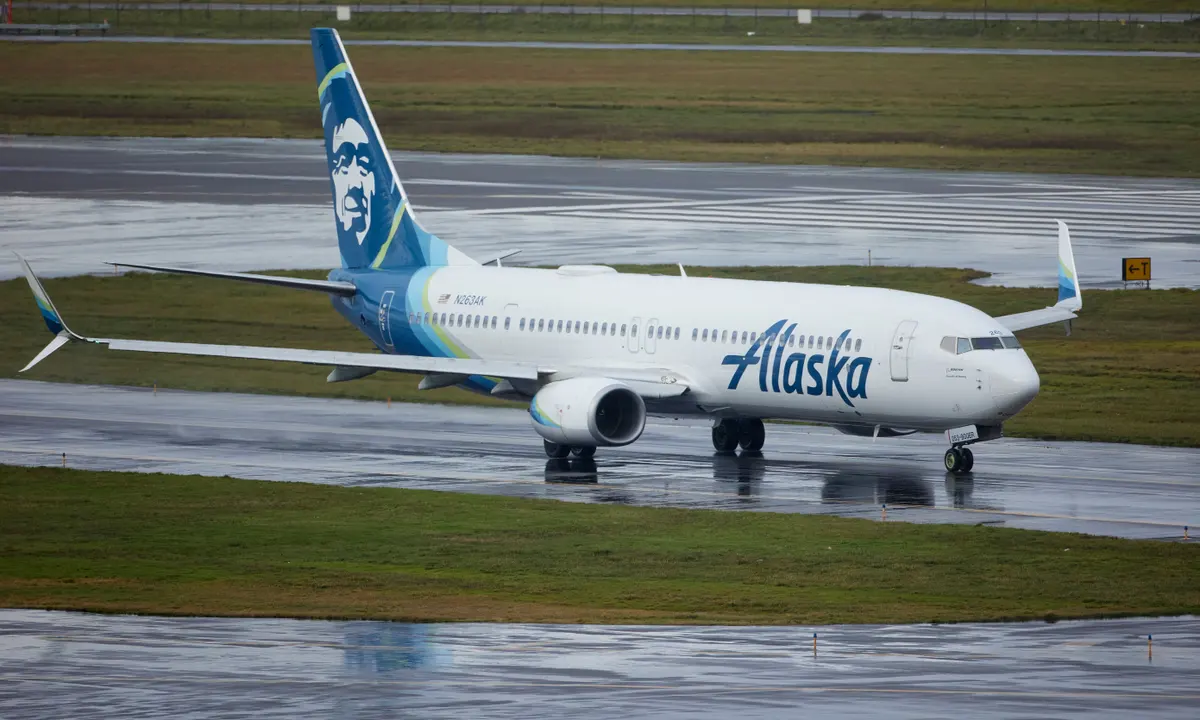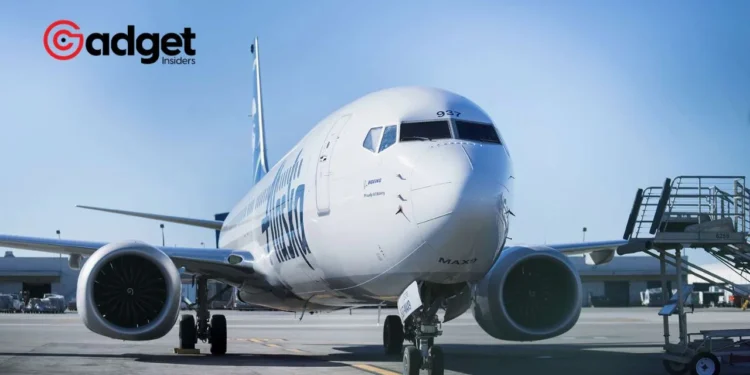In the world of commercial aviation, where the smooth running of operations is as crucial as the aircraft themselves, Alaska Air Group has hit a bit of turbulence that could potentially impact its long-term financial altitude. The Seattle-based carrier, known for its commitment to safety and customer satisfaction, has recently indicated a significant challenge that could see its long-term profit growth veering off the forecasted course.

The Core of the Turbulence: Grounding of the Boeing 737 MAX 9
At the heart of Alaska Air Group’s current predicament is the grounding of its Boeing 737 MAX 9 fleet. This situation stems from a series of unfortunate events, including a mid-air incident involving a blowout of a door plug panel.
The grounding has put a halt to a substantial portion of the airline’s operational capacity, stirring up concerns over the financial forecast for the company. Despite an optimistic outlook earlier in the year, with a forecasted first-quarter adjusted loss per share significantly better than analysts’ gloomy predictions, the grounding of the 737 MAX 9 jets introduces an unexpected headwind.
The company’s acknowledgment of the impact comes amidst a broader context of increased scrutiny over aircraft manufacturing giant Boeing by both the Federal Aviation Administration and the Department of Justice. This scrutiny has led to uncertainties regarding aircraft delivery timings, further complicating the operational outlook for carriers like Alaska Air.

Alaska Air Group’s Financial Forecast: A Bumpy Ride Ahead?
With the grounding of the Boeing 737 MAX 9 aircraft, Alaska Air Group has hinted at a potential deviation from its targeted long-term profit growth range of 4% to 8%. This adjustment reflects not only the immediate loss of capacity but also the broader uncertainties surrounding the aviation industry, particularly those related to regulatory and safety concerns.
Despite these challenges, Alaska Air Group remains committed to navigating these turbulent times, bolstered in part by partial compensation received from Boeing in light of the January incident.
The FAA extended the grounding of Boeing 737 MAX 9 airplanes indefinitely and said it will tighten oversight of the company after a cabin panel broke off a new jet in mid-flight https://t.co/QHmQUUKKjB pic.twitter.com/jPgQqZtCp0
— Reuters (@Reuters) January 13, 2024
Navigating Through Uncertainty
As Alaska Air Group steers through this challenging period, the aviation industry watches closely. The situation underscores the interconnectedness of aviation operations, regulatory oversight, and financial health.
For Alaska Air Group, the grounding of the Boeing 737 MAX 9 fleet is more than just a temporary operational hiccup; it’s a test of resilience and adaptability in an industry known for its highs and lows.

With the skies of the aviation industry filled with both opportunity and uncertainty, Alaska Air Group’s journey ahead is emblematic of the challenges and triumphs that define this dynamic sector.
As the company works towards minimizing the financial impact of the grounding and ensuring the safety and satisfaction of its passengers, the aviation world awaits the next chapter in this unfolding story.
In the end, the resilience of Alaska Air Group amidst these challenges not only highlights the complexities of the aviation industry but also showcases the unwavering commitment of carriers to navigate through adversity, ensuring the safety of passengers and the health of their operations.










